You are here: Home > Thames Piers > Bankside Pier
Bankside Pier
Peter Ackroyd on Bankside
'In the later sixteenth century there was a plethora of Thames poetry. This was the age when one of the principal landmarks of the Thames, Bankside, became the occasion or setting for the greatest of all English poetry. The association of Shakespeare with the Thames is generally neglected, but it was one of the highways of his invention. He lived beside it, first at Southwark and then later at Blackfriars. He crossed it continually, and indeed it became his primary means of transport. His plays were performed beside its banks, either at the Globe or at the indoor theatre in Blackfriars itself; when he writes of the tides, and of the merchant ships, he is considering the life of the Thames.'
'By the late 1940s and 1950s, however, the river was slowly closing down for more mundane reasons. It was not being used by its citizens. The holiday-makers of the nineteenth century had gone, together with the steam-packet trippers and the commuters. It had become a silent river, and was described as a 'broad, white, empty highway'. The reasons for this lack of interest and of attention were various. There were problems of access, because many of the wharves and stairs had been allowed to fall into dilapidation; there was the problem of neglect and consequent drabness; and there was of course the appalling problem of sewage. The South Bank had become 'a term of despair and reproach'. The point was that hardly anyone considered this area of river at all. Very few Londoners knew anything much about the vast port within the midst of the city, and fewer still had any inkling of the nature or extent of the docks. The Thames had become unknown territory. The city had turned its back upon it.'
'The rhythm of the buildings sited on the South Bank, including the National Theatre opened in 1976, has been described as 'flowing'; the architect of the theatre, Denys Lasdun, said that he wanted to create the feeling that 'the audience - like the tides of the river - flow into the auditoriums. Then the tide ebbs and they come out into the creeks of the small spaces that are made by all these terraces'. And of course 'terraces' are the most ancient feature of the Thames.'
Peter Ackroyd's Readings on Bankside
Peter Ackroyd's Readings on Bankside Pier
To hear Peter Ackroyd's Readings on Bankside you will needthe Flash Player. Get it here: 
History of the piers
History at Bankside Pier.
Download the exclusive Dark Waters history of the piers pdf here (pdf - 2MB).
Buildings around Bankside Pier
- Number Key for Dark Waters Map Side One
- 26, 33-37, 39, 40, 41, 43
- (10 buildings)

- 26
- Young Vic Theatre
- 66 The Cut SE1 8LZ
- Haworth Tompkins
- RIBA Award & RIBA London's 'Building of the
- Year' 2007
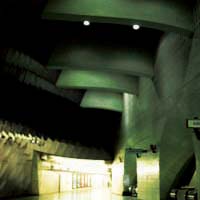
- 33
- Southwark Underground Station
- The Cut SE1
- MacCormac Jamieson Prichard
- RIBA Award 2000

- 34
- Palestra
- Blackfriars Road SE1 8NJ
- SMC Alsop
- RIBA Award 2007

- 35
- Bankside Powerstation / Tate Modern
- 25 Sumner Street SE1 9TG
- Sir Giles Gilbert Scott (original power station)
- Herzog & de Meuron (Tate Modern)
- Royal Gold Medallists 2007
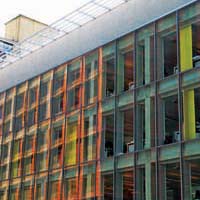
- 36
- 85 Southwark Street
- 85 Southwark St SE1 0HX
- Allies and Morrison
- RIBA Award 2004
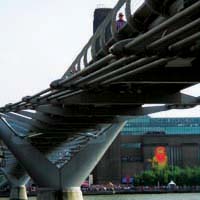
- 37
- Millennium Bridge
- River Thames W1X 1LE
- Foster & Partners
- RIBA Award 2003
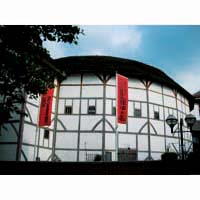
- 39
- Globe Theatre
- 21 New Globe Walk SE1 9DT
- Theo Crosby (Pentagram Design) /
- Buro Happold engineers

- 40
- St Paul's Cathedral
- St Paul's Churchyard EC4M 8AD
- Sir Christopher Wren
- Grade I listed
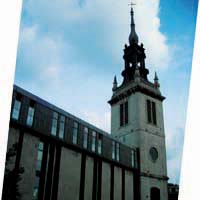
- 41
- St Paul's Cathedral Choir School
- EC4M 9AD
- Architect's Co-Partnership
- RIBA Award 1968
- Grade II* listed
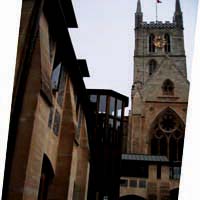
- 43
- Southwark Cathedral Millennium Project
- Montague Close SE1 9DA
- Richard Griffiths Architects
- RIBA Award 2002
- Grade I listed